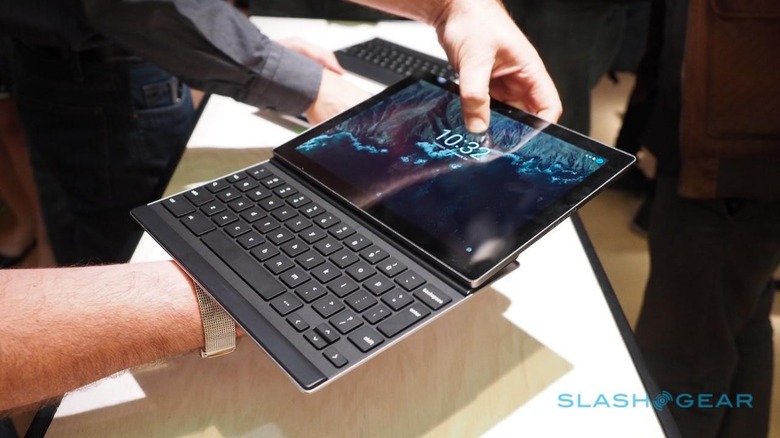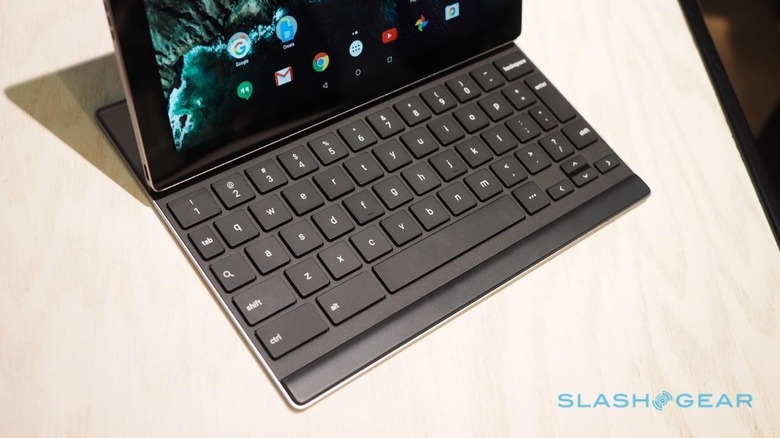Google Pixel C Hands-On
What happens when you set the Chromebook Pixel team loose on Android tablets? The Google Pixel C is the result, a sleek metal-bodied premium slate with a detachable QWERTY keyboard for those who refuse to compromise when it comes to text entry.
Google isn't the first to the 2-in-1 space, and nor is it the first to make an Android device with a removable keyboard. However, the Pixel C could well be one of the most premium-feeling we've seen, not least because of how the two components dock.

No ugly latches or clips, just a keyboard slice that hugs the top or bottom of the tablet section. You nudge them apart to separate, a process which takes a little initial force but is then smooth.
While Google's on-stage demo showed a near-magical multi-angle hinge mechanism that almost looked as though the two parts were only joined by the very narrowest point, the reality is a little more conventional.

As you slide the tablet back along the top of the keyboard, a folding panel built into the keyboard slice grips on and then tilts up. It's that which holds the display at your choice of angles; the mechanism is firm, and the Pixel C didn't topple backwards even as I stabbed at the top portion of the touchscreen.
The keys themselves aren't quite full-sized, but they're close. They have more travel than the MacBook I'm used to typing on, and a generally positive feel that touch-typists with reasonably-sized fingers shouldn't have a problem acclimatizing to.

Google has used Bluetooth to pair keyboard and tablet, rather than pogopins, but the 'board is clever enough to turn off when it's docked behind the display.
As for the tablet, that's lightweight and the screen is excellent: bright and neither too long nor too wide to look right in either portrait or landscape orientation. It's 2560 x 1800 resolution, which looks incredible.
You get the bare minimum of ports – basically Google is betting on USB-C – though, since this is Android rather than Windows or Chrome OS, you could argue that most users won't find this such a limitation.

Still, that would seem like a waste of processing grunt. NVIDIA's Tegra X1 chipset is paired with a healthy 3GB of RAM, but Google says – though tinkering is still underway – they're already seeing around ten hours of battery life.
The same Doze technology in Android Marshmallow which ramps down things like how frequently email inboxes are refreshed when the smartphone is going unused on the desk is credited for doing much the same on the Pixel C.
We'll know more when the Pixel C hits shelves in time for the holidays. At $499 for the slate and another $149 for the keyboard it's not a budget pick in the tablet space, but if you're contrasting with the MacBook – or, indeed, Google's own Pixel notebook – then $648 doesn't seem quite so tough to stomach.
[gallerybanner p=407062]
